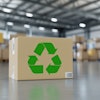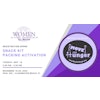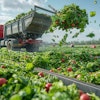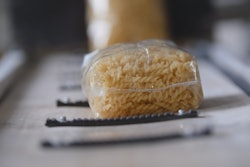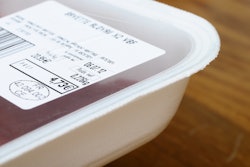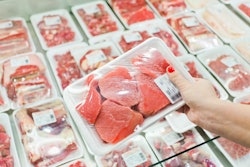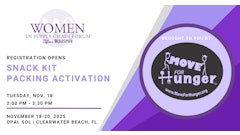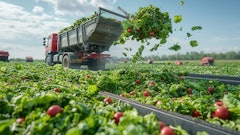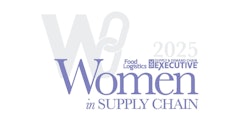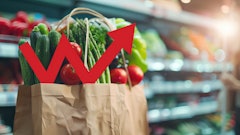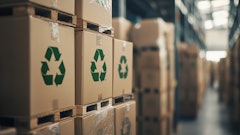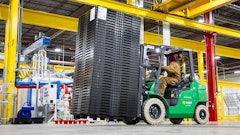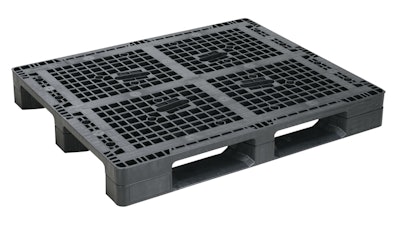
A circular supply chain consists of products and its parts being returned or processed so they can be repaired, resold, refurbished or recycled. It involves minimizing waste, maximizing resources and obtaining resiliency, safety and sustainability. It also comes in many forms, impacting the cold chain in various ways.
Food Logistics talks exclusively with Alex Hempel, senior director of retail supply chain VST, ORBIS Corporation, talks about the importance of converting to reusable packaging.
CLICK HERE to read the article in full.
Food Logistics: What are some of the main challenges with regards to building a circular food chain?
Alex Hempel: Moving ingredients and goods within the supply chain efficiently and quickly is critical to today’s food manufacturers. Supply chain packaging, including pallets and boxes that don’t flow efficiently within a supply chain and can’t be consistently filled, stored, shipped, used or returned for replenishment and reused in a continuous cycle is a major challenge to building a circular food chain.
Examples include corrugated boxes and wood pallets built for one-time use. The disposal of corrugated and wood waste is costly in terms of disposal fees, along with non-value-added labor incurred for setup or breakdown.
Annual packaging costs are another challenge – recurring charges for one-time packaging. These can be avoided with plastic reusable containers, which can last 5-10 years, reducing packaging material costs per trip. Transportation inefficiencies are another challenge. Packaging that is not specially designed to nest or collapse when empty or in a way that factors in the number of parts per container or truckload, can negatively impact ordering capabilities, cost estimating, logistics and transportation planning. Dimensionally consistent packaging that efficiently cubes out trailers and nests/collapses for return trips deliver value to today’s shippers as they plan their transportation.
Food Logistics: What kinds of solutions has your company introduced within the last 12 months that help eliminate food waste, promote sustainable sourcing and more? If your company does not develop solutions, then what solutions do you see as being important for companies to implement?
Hempel: ORBIS launched the reusable Odyssey Pallet that travels more than 400 trips in the supply chain, compared to 11 trips for a wood pallet. This pallet helps companies reduce waste associated with single-use pallets, decrease automated system downtime related to inconsistent packaging and improve plant cleanliness.
ORBIS also launched a series of totes designed for use in automated systems. These durable AROS totes feature automation locators to ensure proper tote placement and hybrid bottoms that offer superior strength in a single piece with a smooth bottom perimeter to ensure smooth conveyance
ORBIS also recently launched packaging life-cycle assessments (PLCAs). ORBIS’ PLCAs help companies calculate the impact reusable packaging can have on the environment. Using life-cycle assessments to compare reusable and single-use packaging, ORBIS applies data-driven analysis to help customers reduce their overall environmental impact in terms of greenhouse gas (GHG) emissions, water, solid waste and energy usage. This unbiased analysis provides companies with measurable data as they make the switch to reusables.
Food Logistics: What advice do you have for those companies who haven’t started the sustainable journey? Where/how should they start?
Hempel: We recognize that converting to reusable packaging within the supply chain impacts an entire enterprise. To ensure a seamless integration, ORBIS uses proven processes to design, plan and implement your packaging program. ORBIS helps companies:
1. Begin with a pilot program. Gain stakeholder acceptance by getting them involved in packaging decisions early in the process. Depending on the organization, it is often beneficial to implement reusable packaging through a pilot program and adjust the process once learnings have been gathered.
2. Manage packaging for long-term benefit. Regular system evaluation is critical in order to track the use of reusable packaging, coordinate washing or sorting services and to oversee equipment changes and address issues as they arise.
3. Plan ahead. It is important to consider supply chain impact and packaging needs as soon as a change is anticipated. We recommend allowing time to test packaging prototypes in the supply chain and to work with and adjust various areas of the plant to facilitate the flow of goods.
Food Logistics: Walk us through some of the government regulations in place or coming down the pipeline that will force food manufacturers, trucking companies and the like to adjust how they do business. For example, meeting Scope 1 regulations, any EV regulations, FSMA updates in relation to food waste, fuel/emissions, etc.
Hempel: The regulatory landscape is rapidly evolving. There are a number of climate-related and sustainability corporate reporting regulation and packaging/plastics legislation examples that come to mind.
U.S. Securities and Exchange Commission (SEC) climate-related disclosure Rule (May 6, 2024) with first disclosures due for fiscal year 2025 by early 2026. This requires publicly listed SEC reporting companies, including foreign private insurers, to provide certain climate-related financial data and GHG emissions insights in public disclosure filings. Disclosure information includes climate-related risks that have had or are likely to have, among others, a material impact on business strategy, results of operations or financial condition.
EU – Packaging and Packaging Waste Regulation (PPWR). The European Union (EU) and Parliament reached a deal on March 4, 2024. Final adoption is expected by year’s end, with full compliance 18 months later. PPWR will establish a binding reuse target for 2030 that economic operators shall ensure that at least 40% of such packaging used is reusable packaging within a system for re-use. A binding reuse 2040 target is that economic operators shall make a sincere effort to use at least 70% of such packaging in a reusable format within a system for re-use.
Food Logistics: From your vantage point, what do you consider to be the Top 3-5 key drivers of circular food chains and why?
Hempel: More attention being focused on the circular economy in addition to sustainability. We hear directly from our customers – in addition to material handling equipment or packaging companies, who are becoming increasingly focused on ensuring their supply chain activities align with circular economy goals.
Consumers who are more environmentally conscious and, as such, will choose to support businesses and brands that share their values. For example, according to a Harvard Business Review report, consumers are 27% more likely to purchase brands that care about their impact on people and the planet. And, when consumers rate a brand highly on humanity, they are 15% more likely to spend more money with the brand and choose it over its competitors.
An acknowledgement that the “take-make-waste” philosophy no longer meets societal requirements. The circular economy concept — which is based on a continuous flow of product in the value circle — is the future of a successful, sustainable supply chain. It focuses on the 3Rs, designing out waste (reduce), keeping products in use (reuse) and regenerating natural resources (recycle/repurpose).
Food Logistics: What are some things not addressed above that may be pertinent to our cold food chain readers?
Hempel: Collaboration is key. Bring together internal and external stakeholders, including upstream suppliers and shipping partners, to determine your sustainability goals and how reusable packaging will play a role. Have “collaborative conversations” that get everyone together and working toward similar goals to drive value for the company and end customer.
CLICK HERE to read the article in full.

